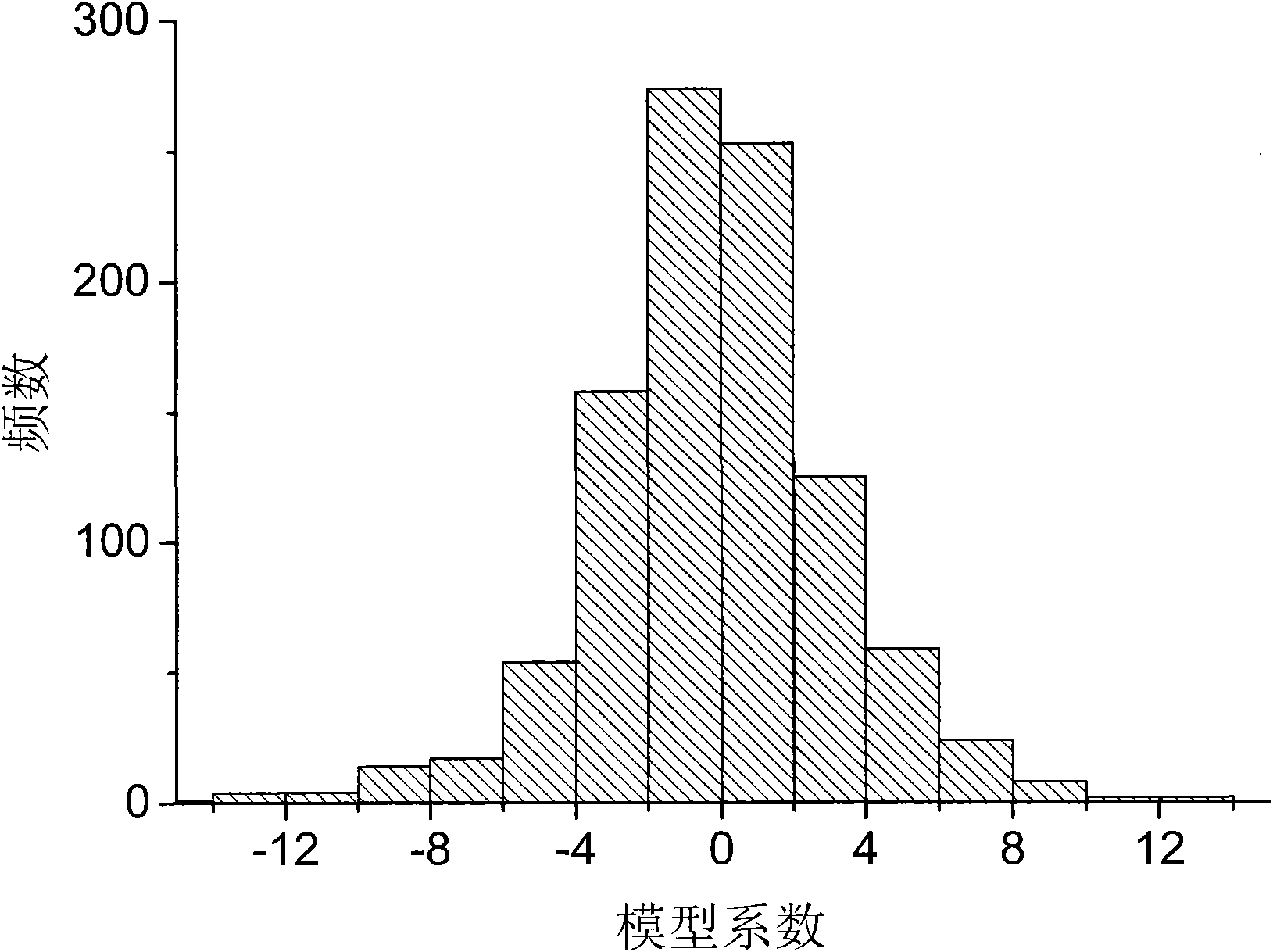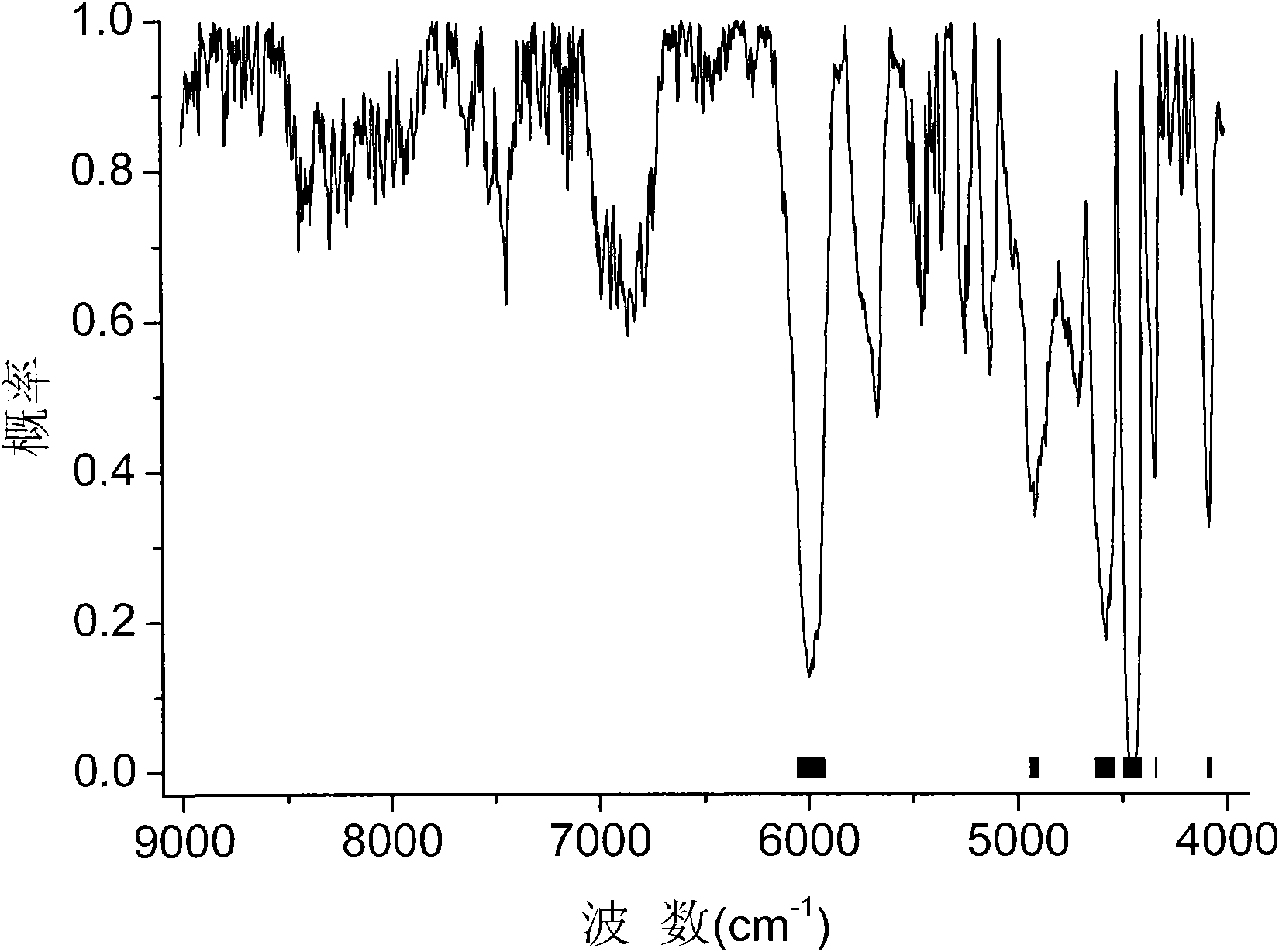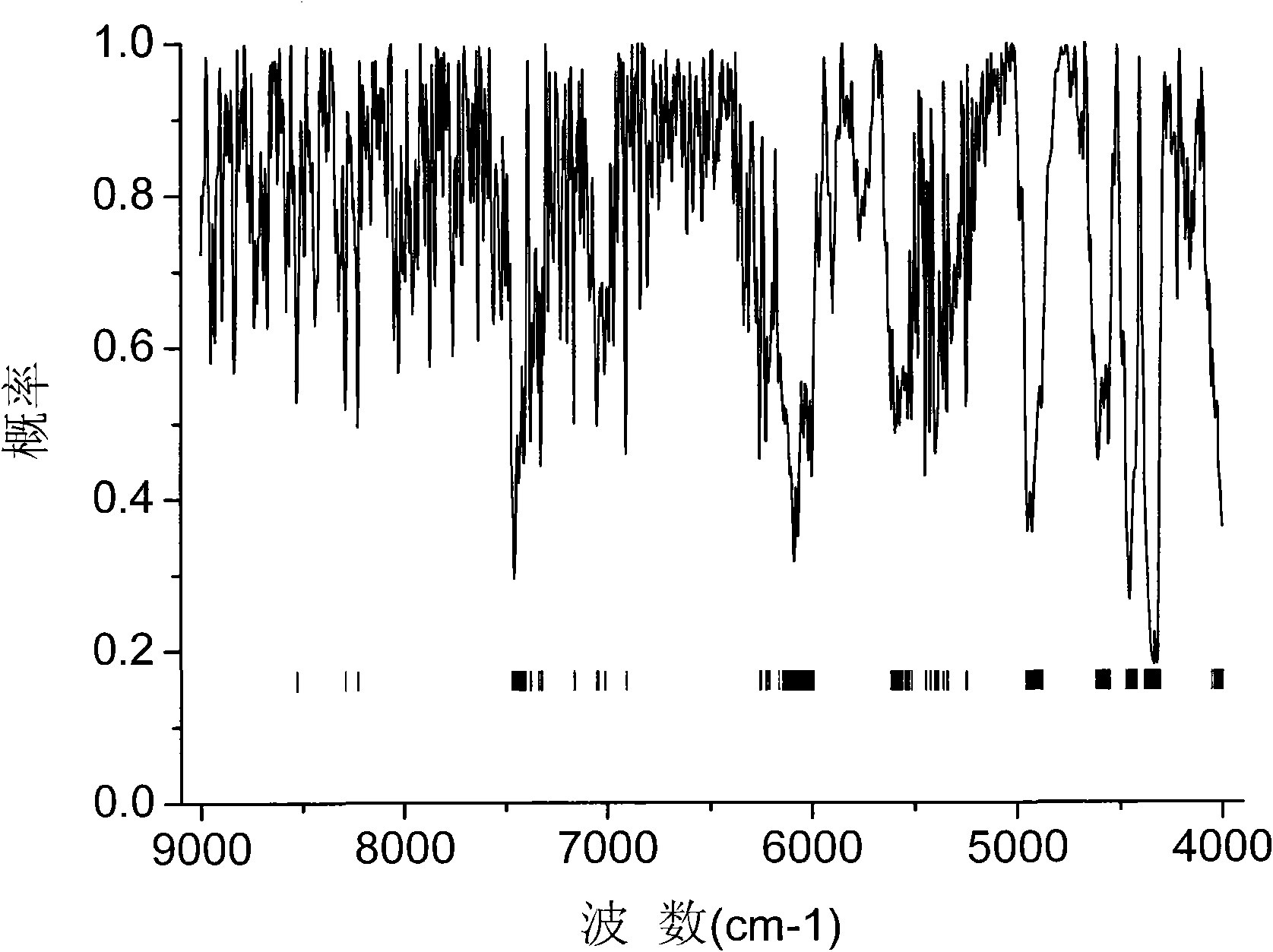Screening method for near infrared spectrum wavelength and Raman spectrum wavelength
A technology of near-infrared spectroscopy and Raman spectroscopy, applied in the field of non-destructive analysis, wavelength screening of near-infrared spectroscopy and Raman spectroscopy, can solve the problems of long calculation period of genetic algorithm, easy to fall into the limitation of local optimum, and achieve simplified quantitative Analysis model, high practical value, effect of improving prediction accuracy
- Summary
- Abstract
- Description
- Claims
- Application Information
AI Technical Summary
Problems solved by technology
Method used
Image
Examples
Embodiment 1
[0026] This embodiment is applied to near-infrared spectrum analysis to measure the content of nicotine in tobacco samples. The specific steps are as follows:
[0027] 1) A quantitative analysis model was established by measuring the near-infrared spectra of 800 tobaccos. The spectra were measured by an MPAFT-NIR spectrometer (Bruker, Germany), and the wavenumber range was 3999.7-9002.3cm -1 (2500.2-833.7nm), the sampling interval is about 4 wavenumbers, a total of 1298 wavelength points, the tobacco samples are randomly divided into three parts before modeling, including training set, test set and prediction set, and the number of samples in the training set is 400 , the test set and the forecast set sample size are 200, and the content of nicotine in the sample adopts AAIII type continuous flow analyzer (BRAN+LUBBE, Germany) to measure according to the standard method;
[0028] 2) Using the spectrum of the training set sample and the concentration of nicotine components, pe...
Embodiment 2
[0038] This embodiment is applied to near-infrared spectrum analysis to determine the content of total sugar in tobacco samples. The specific steps are as follows:
[0039] 1) A quantitative analysis model was established by measuring the near-infrared spectra of 400 tobaccos. The spectra were measured by an MPAFT-NIR spectrometer (Bruker, Germany), and the wavenumber range was 3999.7-9002.3cm -1 (2500.2-833.7nm), the sampling interval is about 4 wavenumbers, a total of 1298 wavelength points, the tobacco samples are randomly divided into three parts before modeling, including training set, test set and prediction set, and the number of samples in the training set is 200 , the test set and the forecast set sample size are 100, and the content of total sugar in the sample adopts AAIII type continuous flow analyzer (BRAN+LUBBE, Germany) to measure according to the standard method;
[0040] 2) Using the spectrum of the training set samples and the concentration of total sugar co...
Embodiment 3
[0050] This embodiment is applied to Raman spectroscopic analysis, and the content values of sarcosine and glycine components in biological metabolite samples are respectively determined. A quantitative analysis model was established by measuring the Raman spectra of 86 biological metabolite samples. The Raman spectra were measured by RP-1Raman Identification System (Spectracode Inc., Purdue Research Park, West Lafayette, Indiana, USA), with a wavenumber range of 473.59-2636.3 cm-1, the sampling interval is about 5 wavenumbers, and there are 422 wavelength points in total. Before modeling, the biological metabolite samples were randomly divided into three parts, including training set, test set and prediction set. The number of samples in the training set was 36, and the number of samples in the test set and prediction set was 25. The contents of sarcosine and glycine in biological metabolite samples were prepared according to conventional methods. The implementation steps ...
PUM
 Login to View More
Login to View More Abstract
Description
Claims
Application Information
 Login to View More
Login to View More - R&D
- Intellectual Property
- Life Sciences
- Materials
- Tech Scout
- Unparalleled Data Quality
- Higher Quality Content
- 60% Fewer Hallucinations
Browse by: Latest US Patents, China's latest patents, Technical Efficacy Thesaurus, Application Domain, Technology Topic, Popular Technical Reports.
© 2025 PatSnap. All rights reserved.Legal|Privacy policy|Modern Slavery Act Transparency Statement|Sitemap|About US| Contact US: help@patsnap.com



